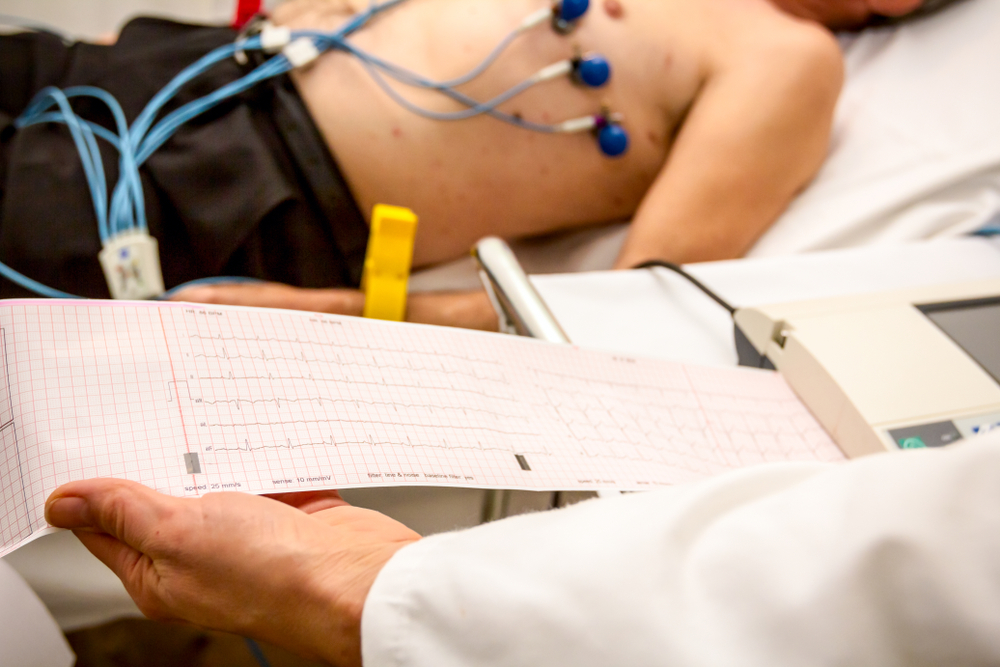Ever left a doctor’s office clutching a lab slip, thinking, “Do I really need this?” You’re not alone. Some medical tests have been around so long they’re treated like sacred rituals—even when science says they’re about as accurate as throwing darts blindfolded. From outdated screenings to unreliable scans, modern medicine still clings to a surprising number of diagnostic dinosaurs.
It’s not that doctors don’t care; it’s that habits, insurance rules, and patient expectations keep these tests alive and kicking. So grab your stethoscope of skepticism—here are ten medical tests that refuse to die, even when their accuracy flatlines.
1. The Annual EKG for Healthy Adults
The electrocardiogram (EKG) has become a routine part of many physicals—but for people with no heart symptoms or risk factors, it’s mostly unnecessary. Studies have shown that annual EKGs often detect harmless irregularities that lead to needless anxiety and expensive follow-ups. The irony? The test can cause more stress than the heart issue it’s supposed to find. For truly healthy patients, the EKG is a prime example of medical overkill wrapped in good intentions. Still, many clinics keep offering it because patients expect high-tech reassurance.
2. The Rapid Strep Test That Misses the Mark
That little swab at the back of your throat feels like a surefire way to detect strep throat, right? Not so fast—rapid strep tests have a significant false-negative rate, meaning they often miss real infections. Doctors usually follow up with a culture, but the rapid version still gets handed out like candy. The danger lies in false reassurance—patients may skip antibiotics or infect others, thinking they’re fine. Despite the flaws, rapid strep tests remain popular because they’re fast, cheap, and seem reassuringly “medical.”
3. The Outdated Pap Smear Frequency
Pap smears save lives—no question there. But many clinics still recommend them annually, even though modern research supports testing every three years for most women. The yearly test can lead to unnecessary anxiety and invasive follow-up procedures for minor, harmless abnormalities. The science is clear, but old habits die hard in gynecology offices. In many cases, it’s not the science that keeps the test frequent—it’s patient comfort with routine and the healthcare system’s inertia.
4. The PSA Test Panic
The PSA (Prostate-Specific Antigen) test was once hailed as a revolution in early prostate cancer detection. But research later revealed that elevated PSA levels can be caused by all sorts of non-cancer issues—from infections to recent exercise. False positives often lead to unnecessary biopsies and even overtreatment of harmless cancers. Many experts now advise against routine PSA screening for average-risk men, yet it remains a staple in clinics everywhere. Why? Because telling patients not to screen feels riskier than facing the consequences of overtesting.
5. The Allergy Skin Test Overload
If you’ve ever walked out of an allergist’s office looking like a connect-the-dots drawing, you know the allergy skin test. While useful for major allergies, these tests are infamous for false positives—telling people they’re allergic to foods or substances that don’t actually harm them. Some practitioners rely on these tests too heavily, leading to unnecessary diet restrictions and anxiety. Modern blood tests and careful clinical observation often work better. But patients like tangible results, and nothing feels more “official” than a back full of itchy red dots.
6. The Tilt Table Test Drama
Designed to diagnose fainting spells and dizziness, the tilt table test is dramatic—it literally tilts you to see if you pass out. Unfortunately, it’s not very accurate and often leads to more confusion than clarity. Some patients faint simply from the stress of being strapped down, not from any real underlying issue. Despite its questionable value, the test persists because it’s theatrical, billable, and occasionally—by sheer coincidence—helpful. For many doctors, it’s the medical equivalent of fishing in murky water and hoping to catch something.
7. The Spinal X-Ray for Back Pain
Back pain sends millions to doctors every year, and many walk out with a prescription for—you guessed it—an X-ray. The problem? Most back pain has nothing to do with bone issues that X-rays can detect. In fact, unnecessary imaging often leads to misdiagnosis or even surgery for problems that would have healed with rest. Guidelines now say imaging should only be used for red-flag symptoms, but old habits—and patient expectations—keep the X-ray machines humming. The result: plenty of radiation exposure, not much useful data.
8. The Lyme Disease Test Confusion
Lyme disease testing is a classic example of medical gray areas. The standard two-step test can miss early infections, leading to false negatives that delay treatment. On the flip side, alternative “Lyme panels” often yield false positives, leading to months of unnecessary antibiotics. It’s a lose-lose situation for patients stuck between underdiagnosis and overdiagnosis. Despite decades of debate, no test has emerged as perfectly reliable—but that hasn’t stopped doctors from ordering them anyway.
9. The Mammogram Misunderstanding
Mammograms save lives, but their accuracy isn’t perfect—especially for younger women with dense breast tissue. False positives can lead to painful biopsies and emotional distress, while false negatives can offer a dangerous sense of security. The problem isn’t the test itself—it’s the one-size-fits-all approach. Screening guidelines vary wildly, leaving both patients and doctors unsure of what’s truly “right.” Yet despite its limitations, mammography remains a default recommendation, partly out of caution and partly out of habit.
10. The Vitamin D Blood Test Obsession
For a while, it seemed like everyone was getting tested for vitamin D deficiency. But newer research shows the test isn’t nearly as precise as once thought, and mild deficiencies rarely require intervention. Despite this, doctors still order the test in droves, partly because patients request it after reading wellness blogs. The irony is that overtesting often leads to unnecessary supplements, which can cause their own health problems. Sometimes, sunlight and balance really are the best medicine.
Medicine’s Love Affair With the Familiar
So why do these tests linger long after science says, “Let it go”? The truth is, medicine isn’t just about biology—it’s about psychology, tradition, and reassurance. Patients crave certainty, and doctors feel pressure to deliver it, even when the tools are flawed. Breaking old habits takes time, education, and trust on both sides of the exam table.
Have you ever had a medical test that turned out to be inaccurate or unnecessary? Share your experiences, stories, or opinions in the comments.
You May Also Like…
- Could A Medical Emergency Bankrupt You Even With Insurance?
- 9 DIY Remedies That Medical Boards Are Warning Against
- Why Do Prescription Discount Cards Sometimes Make Medicines More Expensive
- 10 Health Procedures Doctors Keep Doing Only for Profit
- 7 Health-Linked Money Trends That Are Quietly Saving Lives


